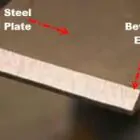Sustainability and careful use of resources and energy are becoming more and more important in the manufacturing industry. This is true not only because of new energy laws and eco-design directives, but also because it saves money and reduces a company’s environmental footprint. Since welding is a key part of many production processes, we can see that this trend is also becoming more common here. But what kinds of things do we have to think about? What are the most important things to look for when choosing the most durable welding system? And what makes welding in general a more sustainable process?
How do you know if a welding system is good for the environment? Here are the four most important things about welding systems that last:
Durability for being sustainability.
Making anything, like cars, cellphones, or even welding systems, uses natural resources, like steel, crude oil products, plastics, energy, and water. Due to this, if a product’s life is long and you don’t need repair, then it is more sustainable. Fronius puts new developments through eight comprehensive robustness tests to make sure that they will work reliably and well even in harsh conditions. Here, the internal standards are much higher than the limit values that the law requires.
Reparability
Repairability goes hand in hand with the idea of a long service life. The Ecodesign Directive has rules about what an environmentally friendly welding system needs to do. Fronius already does what these rules say. Almost all of our devices is repairable using tools which are available in stores. There is also a service idea that makes it easy to change out individual parts.
Around the world, there are 34 subsidiaries and repair centres, as well as certified Fronius Service Partners and representatives in more than 60 countries who make sure that repairs are done quickly, systems are maintained professionally, and that they are calibrated correctly.
Recyclability
As soon as a new welding system is made, recycling comes into play. When choosing materials, it’s important to think about how they will be thrown away. When quality allows, recycled materials are used to make things. But as a general rule, repair is better than recycling. And that is what brings sustainability.
Multifunctional
Multiprocess welding systems are a great way to save money. You can use one system for all kinds of welding, from TIG and MMA to MIG/MAG, so you don’t need to buy several separate systems. Using multiprocess welding systems, like the new Fronius iWave Multiprocess PRO, saves time and money. But when it comes to multiprocess models, it’s important to make sure that all welding processes are available without limits and to the same high standard.
What makes welding a sustainable process?
Using a welding system that can be fixed and recycled and has a long life span is a big step toward sustainability. But that’s not enough. Welding is mostly about getting things done. A real goal is to get the best weld seam possible using as little energy and materials as possible and as quickly as possible. As with any industrial process, arc welding leaves an environmental footprint that needs to be kept as small as possible.
With inverter technology, energy use goes down
Fronius was the first company in the world to use inverter technology based on transistors in its welding systems. Since then, they have kept improving it. What made this so revolutionary was that it took up to a third less power and about 80% less material to join the pieces. This is because the devices are smaller and lighter. They are also easier to use in different places because you can move it around.
Speed is important
If a single welding system can do more work, a company will need to buy fewer new systems. This can make it possible to get rid of whole manufacturing cells.
Safety and health
The only truly sustainable ways to weld are those that protect the health and safety of the people using them. The focus here is on protection from welding fumes, UV radiation, flash burns to the eyes, heat, and flames.
There are mobile air-filtering devices, like fume extraction torches and fresh air helmet systems, that can protect you from dangerous gases. Welding helmets protect the eyes from heat, UV rays, and burns caused by sparks. High temperatures and welding spatter can be dangerous, but high-quality, functional protective clothing, like safety shoes and welding gloves, can keep you safe.





